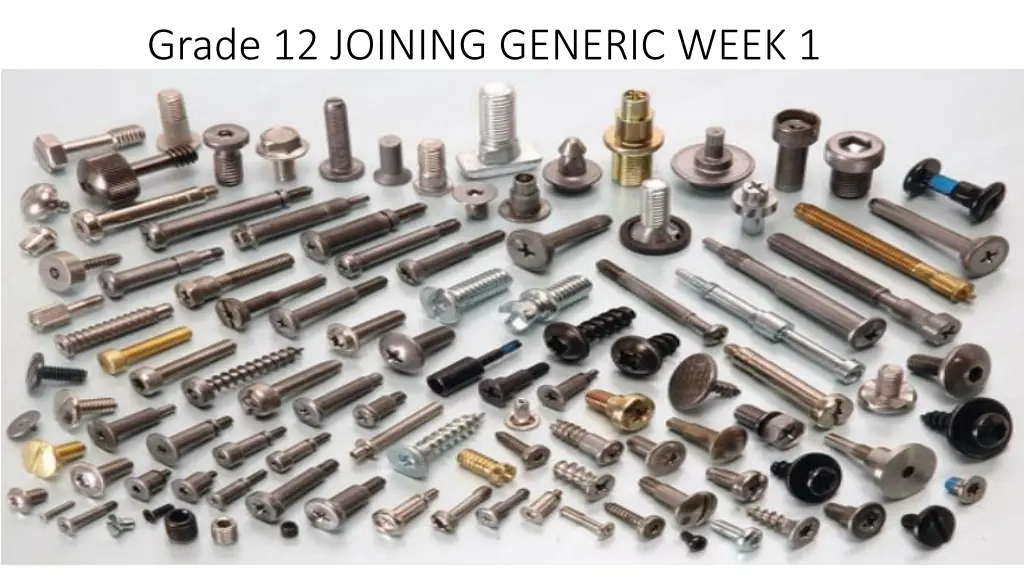
Joining Techniques and Fasteners
Learn about different types of fasteners and joining techniques such as bolts and nuts, rawl bolts, and plastic plugs. Discover how to use these fasteners to join materials effectively in various applications like wood and metal. Get insights on the manufacturing materials and uses of rawl plugs and plastic plugs.
Download Presentation

Please find below an Image/Link to download the presentation.
The content on the website is provided AS IS for your information and personal use only. It may not be sold, licensed, or shared on other websites without obtaining consent from the author. If you encounter any issues during the download, it is possible that the publisher has removed the file from their server.
You are allowed to download the files provided on this website for personal or commercial use, subject to the condition that they are used lawfully. All files are the property of their respective owners.
The content on the website is provided AS IS for your information and personal use only. It may not be sold, licensed, or shared on other websites without obtaining consent from the author.
E N D
Presentation Transcript
Joining (Generic) Joining (Generic) In this lesson we will be looking at.. Identify and explain the use of: Bolts and nuts Rawl bolts Plastic plugs Rawl plugs
FASTENERS FASTENERS Bolts and Nuts Bolts and Nuts Bolts and Nuts are classified as fasteners. Fixed parts together. Manufactured with different threads. Have different lengths and sizes. How to join two pieces of material (Wood / Metal) together with a bolt and nut: Step 1. - Drill a hole of the required diameter through both pieces of material. Step 2. - Insert the bolt from one side sliding through both pieces of material. Step 3. - Add a washer and nut and fasten it from the tread side.
FASTENERS Bolts and Nuts Questions 1. Identify the fastener in the sketch. 2. Explain in three steps how you will join the material that are being used in the sketch with the fixture mentioned in answer 1. Answers 1. Bolt and Nut. 2. Drill a hole of the required diameter through both pieces of material. Insert the bolt from one side sliding through both pieces of material. Add a washer and nut and fasten it from the tread side.
Rawl Rawl Bolts Bolts How to use a rawl bolt Rawl bolt Rawl bolt with hook Rawl bolt with eye
Question Question Arrange the images in the correct order from A E, to insert a rawl bolt into a brick wall. C B A Answer: E, C, A, B and D E D
Rawl Rawl plug / Plastic plugs plug / Plastic plugs Manufactured of plastic and grey fibre. Capable of gripping and holding screws when inserted into a wall. Work especially well in concrete and brick walls. Consider the weight of the object being secured. Questions 1. Of what material is the rawl plug manufactured? 2. What are the plastic plugs used for? Answers 1. Mostly plastic / Grey fibre 2. Gripping and holding screws when inserted into the wall. Any acceptable answer.






















